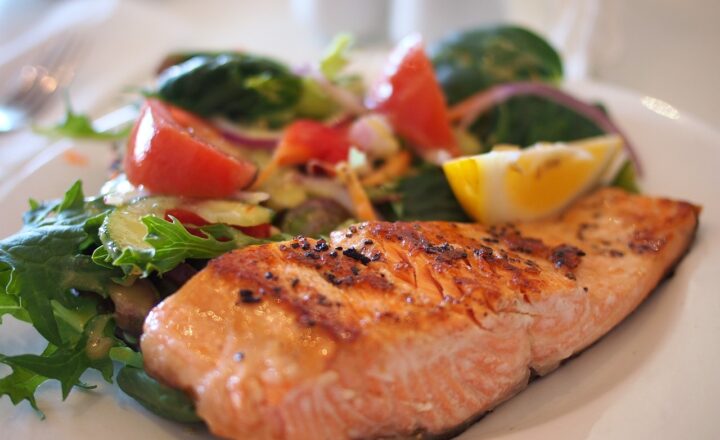The Secrets Behind the World’s Most Delicious Cuisines and Their Traditions
November 17, 2024

Cuisines around the world are not just mere collections of recipes; they are a tapestry of culture, history, and tradition. Each dish tells a story, and each ingredient adds a thread to that story. This article takes you on a culinary journey to explore the secrets behind some of the world’s most delicious cuisines and the rich traditions that accompany them.
1. The Essence of Culinary Traditions
Culinary traditions are the heart of cultures, reflecting their history, geography, and available resources. They are passed down through generations, contributing to the identity of a community. For instance, the spices used in Indian cooking are a reflection of the country’s agricultural diversity and trade history, while the emphasis on seasonal ingredients in Japanese cuisine speaks to a deep respect for nature.
These traditions shape our palates and influence our cooking techniques, leading to the creation of unique dishes.
2. The Spice of Life: A Journey through Indian Cuisine
Indian cuisine is renowned for its vibrant flavors and aromatic spices. It varies significantly from region to region, boasting a plethora of dishes that showcase an array of cooking styles and techniques.
**Key Components of Indian Cuisine:**
- Spices: From turmeric to cardamom, spices are integral to Indian dishes, enhancing flavor and nutritional value.
- Rice and Bread: Staples like basmati rice and various types of bread, such as naan and roti, accompany most meals.
- Curry Varieties: Indian curries range from vegetarian to meat-based, with complex flavors that often take hours to prepare.
The tradition of cooking in India often revolves around family gatherings, with recipes cherished and passed down as family heirlooms.
3. The Heart of Italy: Food as a Family Affair
Italian cuisine is synonymous with family and tradition. It is characterized by its use of fresh, high-quality ingredients and traditional cooking methods.
**Elements of Italian Cuisine:**
- Pasta and Sauces: Italy’s iconic pasta comes in various shapes and is usually paired with sauces made from tomatoes, garlic, and olive oil.
- Regional Variations: Dishes vary significantly across regions, highlighting local ingredients—like risotto in the north and pizza in the south.
- Slow Cooking Traditions: Many Italian recipes involve slow cooking, emphasizing the importance of patience and time in crafting a meal.
In Italy, food is more than sustenance; it’s an integral part of social gatherings, celebrating life’s milestones and fostering community.
4. The Art of French Cuisine: Elegance and Technique
French cuisine is famed for its meticulous techniques, blending rich flavors and elegance. Known as the foundation of modern culinary arts, French cooking focuses on high-quality ingredients and skillful execution.
**Signature Aspects:**
- Techniques: French cooking techniques, such as sautéing and poaching, emphasize precision, and many chefs undergo years of training to master them.
- Cheese and Wine Culture: France’s diverse cheeses and wines are integral to meals, often served in courses to enhance the dining experience.
- Presentation: French cuisine prioritizes aesthetics, from the plating of dishes to the ambiance of dining settings.
The French dining experience is a celebration of flavors, where meals become occasions to savor and enjoy.
5. Exploring the Flavors of Mexico: A Colorful Culinary Heritage
Mexican cuisine is vibrant, spicy, and deeply rooted in tradition. Each dish tells a story of ancient civilizations and regional diversity, making it one of the most beloved cuisines globally.
**Fundamental Features of Mexican Cuisine:**
- Corn as a Staple: Corn is a staple ingredient, appearing in various forms like tortillas, tamales, and pozole.
- Chiles and Spices: Traditional ingredients like chiles, cumin, and lime infuse dishes with bold flavors that are both enticing and complex.
- Festivals and Food: Celebrations are often centered around food, with special recipes prepared for holidays and cultural events.
Eating in Mexico is a communal experience, often shared with family and friends with an emphasis on togetherness.
6. Traditional Japanese Cuisine: Harmony with Nature
Japanese cuisine is a celebration of seasonality and aesthetics, focusing on balance, harmony, and respect for nature. Known for its simplicity and attention to detail, Japanese food showcases raw ingredients combined in harmonious ways.
**Core Principles of Japanese Cuisine:**
- Seasonal Eating: Japanese cooking promotes the concept of eating with the seasons, using ingredients at their peak freshness.
- Sushi and Sashimi: Fresh seafood and precise cutting techniques bring forth the flavors of the ocean in iconic dishes like sushi and sashimi.
- Presentation Matters: The aesthetics of food are paramount, with careful attention given to how dishes are presented, often resembling an art form.
Japanese cuisine embodies a philosophy of balance and subtlety, making dining an artful experience.
7. The Importance of Culinary Heritage
Understanding the uniqueness of each cuisine is essential in appreciating culinary heritage. Dishes carry with them reminders of the past, including influences from colonization, trade routes, and migration. It’s important to preserve these traditions as they provide a glimpse into a culture’s identity and history.
As globalization makes us increasingly interconnected, we have the opportunity to explore, share, and celebrate diverse culinary practices. By acknowledging and respecting original recipes and cooking techniques, we can develop a deeper understanding of other cultures.
Conclusion: A Culinary Tapestry
Cuisines around the world are a reflection of intricate histories and cultural narratives. As you explore these kitchens, remember that food is a bridge that connects us. It informs our traditions, our identities, and, ultimately, our shared humanity. The world is rich with flavors and stories waiting to be discovered, inviting all to join this culinary adventure. So step into your kitchen, embrace your culinary traditions, learn from others, and create your narrative through food.
Enjoy the delicious world we live in, one bite at a time!







